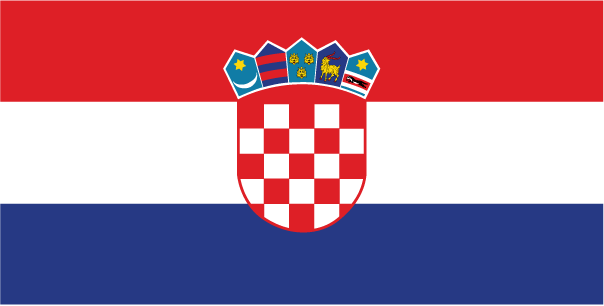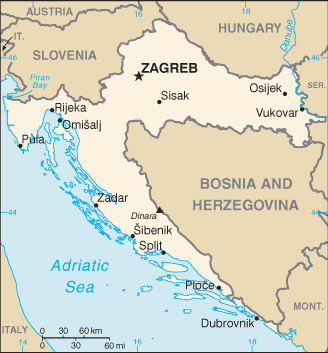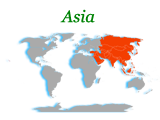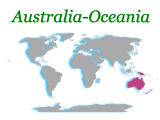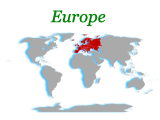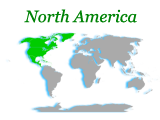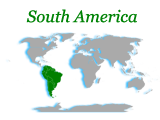The lands that today comprise Croatia were part of the Austro-Hungarian Empire until the close of World War I. In 1918, the Croats, Serbs, and Slovenes formed a kingdom known after 1929 as Yugoslavia. Following World War II, Yugoslavia became a federal independent Communist state under the strong hand of Marshal TITO. Although Croatia declared its independence from Yugoslavia in 1991, it took four years of sporadic, but often bitter, fighting before occupying Serb armies were mostly cleared from Croatian lands. Under UN supervision, the last Serb-held enclave in eastern Slavonia was returned to Croatia in 1998. In April 2009, Croatia joined NATO; it is a candidate for eventual EU accession.
Population
4,486,881 (July 2010 est.)
Country comparison to the world:122
Nationality
Noun:Croat(s), Croatian(s)
Adjective:Croatian
Ethnic groups
Croat 89.6%, Serb 4.5%, other 5.9% (including Bosniak, Hungarian, Slovene, Czech, and Roma) (2001 census)
Religions
Roman Catholic 87.8%, Orthodox 4.4%, other Christian 0.4%, Muslim 1.3%, other and unspecified 0.9%, none 5.2% (2001 census)
Languages
Croatian 96.1%, Serbian 1%, other and undesignated 2.9% (including Italian, Hungarian, Czech, Slovak, and German) (2001 census)
Country Name
Conventional long form:Republic of Croatia
Conventional short form:Croatia
Local long form: Republika Hrvatska
Local short form:Hrvatska
Former:People's Republic of Croatia, Socialist Republic of Croatia
Government Type
presidential/parliamentary democracy
Capital
Name: Zagreb
Geographic coordinates:45 48 N, 16 00 E
Time difference:UTC+1 (6 hours ahead of Washington, DC during Standard Time)
daylight saving time: +1hr, begins last Sunday in March; ends last Sunday in October
Administrative divisions
20 counties (zupanije, zupanija - singular) and 1 city* (grad - singular); Bjelovarsko-Bilogorska, Brodsko-Posavska, Dubrovacko-Neretvanska (Dubrovnik-Neretva), Istarska (Istria), Karlovacka, Koprivnicko-Krizevacka, Krapinsko-Zagorska, Licko-Senjska (Lika-Senj), Medimurska, Osjecko-Baranjska, Pozesko-Slavonska (Pozega-Slavonia), Primorsko-Goranska, Sibensko-Kninska, Sisacko-Moslavacka, Splitsko-Dalmatinska (Split-Dalmatia), Varazdinska, Viroviticko-Podravska, Vukovarsko-Srijemska, Zadarska, Zagreb*, Zagrebacka
Independence
25 June 1991 (from Yugoslavia)
National Holiday
Independence Day, 8 October (1991); note - 25 June 1991 was the day the Croatian parliament voted for independence; following a three-month moratorium to allow the European Community to solve the Yugoslav crisis peacefully, Parliament adopted a decision on 8 October 1991 to sever constitutional relations with Yugoslavia
Constitution
adopted on 22 December 1990; revised 2000, 2001
Legal system
based on Austro-Hungarian law system with Communist law influences; has not accepted compulsory ICJ jurisdiction
Suffrage
18 years of age, 16 if employed; universal
Executive branch
Chief of state:President Ivo JOSIPOVIC (since 18 February 2010)
Head of government:Prime Minister Jadranka KOSOR (since 6 July 2009); Deputy Prime Ministers Bozidar PANKRETIC (since 6 July 2009), Darko MILINOVIC (since 13 November 2009), Ivan SUKER (since 13 November 2009), Djurdja ADLESIC (since 12 January 2008), Slobodan UZELAC (since 12 January 2008)
Cabinet:Council of Ministers named by the prime minister and approved by the parliamentary assembly
(For more information visit the World Leaders website)
Elections:president elected by popular vote for a five-year term (eligible for a second term); election last held on 10 January 2010 (next to be held in December 2015); the leader of the majority party or the leader of the majority coalition usually appointed prime minister by the president and then approved by the assembly
Election results:Ivo JOSIPOVIC elected president; percent of vote in the second round - Ivo JOSIPOVIC 60%, Milan BANDIC 40%
Legislative branch
unicameral Assembly or Sabor (153 seats; members elected from party lists by popular vote to serve four-year terms)
Elections:last held on 25 November 2007 (next to be held by November 2011)
Election results: percent of vote by party - NA; number of seats by party - HDZ 66, SDP 57, HNS 6, HSS 6, HDSSB 3, IDS 3, SDSS 3, other 9
Judicial branch
Supreme Court; Constitutional Court; judges for both courts are appointed for eight-year terms by the Judicial Council of the Republic, which is elected by the Assembly
Political Parties and Leaders
Croatian Democratic Congress of Slavonia and Baranja or HDSSB [Vladimir SISLJAGIC]; Croatian Democratic Union or HDZ [Jadranka KOSOR]; Croatian Party of the Right or HSP [Anto DJAPIC]; Croatian Peasant Party or HSS [Josip FRISCIC]; Croatian Pensioner Party or HSU [Silvano HRELJA]; Croatian People's Party or HNS [Radimir CACIC]; Croatian Social Liberal Party or HSLS [Darinko KOSOR]; Independent Democratic Serb Party or SDSS [Vojislav STANIMIROVIC]; Istrian Democratic Assembly or IDS [Ivan JAKOVCIC]; Social Democratic Party of Croatia or SDP [Zoran MILANOVIC]
Political pressure groups and leaders
Other:human rights groups
International organization participation
ACCT (observer), Australia Group, BIS, BSEC (observer), CE, CEI, EAPC, EBRD, FAO, IADB, IAEA, IBRD, ICAO, ICC, ICCt, ICRM, IDA, IFAD, IFC, IFRCS, IHO, ILO, IMF, IMO, IMSO, Interpol, IOC, IOM, IPU, ISO, ITSO, ITU, ITUC, MIGA, MINURCAT, MINURSO, MINUSTAH, NAM (observer), NATO, NSG, OAS (observer), OIF (observer), OPCW, OSCE, PCA, SECI, UN, UNCTAD, UNDOF, UNESCO, UNFICYP, UNIDO, UNIFIL, UNMIL, UNMIS, UNMOGIP, UNWTO, UPU, WCO, WFTU, WHO, WIPO, WMO, WTO, ZC
Diplomatic representation in the US
Chief of mission:Ambassador Kolinda GRABAR-KITAROVIC
Chancery:2343 Massachusetts Avenue NW, Washington, DC 20008
Telephone: [1] (202) 588-5899
FAX:[1] (202) 588-8936
Consulate(s) general:Chicago, Los Angeles, New York
Diplomatic representation from the US
Chief of mission:Ambassador James B. FOLEY
Embassy: 2 Thomas Jefferson Street, 10010 Zagreb
Mailing address:use street address
Telephone:[385] (1) 661-2200
FAX:[385] (1) 661-2373
Flag description
three equal horizontal bands of red (top), white, and blue - the Pan-Slavic colors - superimposed by the Croatian coat of arms; the coat of arms consists of one main shield (a checkerboard of 13 red and 12 silver (white) fields) surmounted by five smaller shields that form a crown over the main shield; the five small shields represent five historic regions, they are (from left to right): Croatia, Dubrovnik, Dalmatia, Istria, and Slavonia
